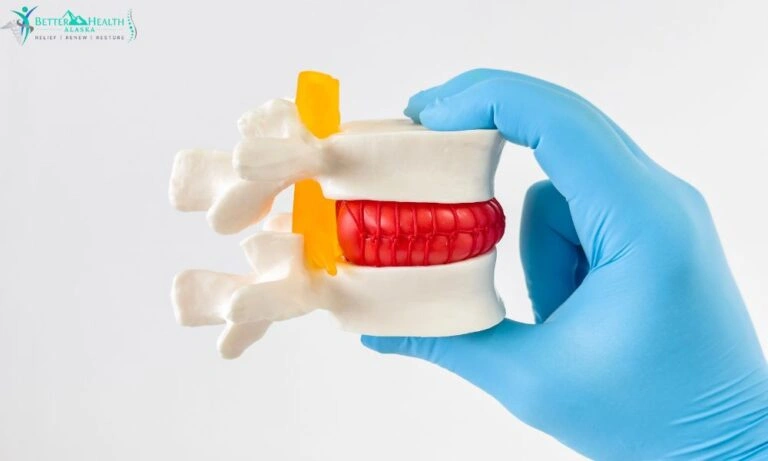If you are suffering from fibromyalgia, you probably know more about your condition than most doctors.
In the not so distant past, complaints about wide spread pain and fatigue would lead doctors, and even co-workers and family members, to declare that you were lazy or even a bit crazy.
Doctors just refused to believe that it existed. With no equipment to measure pain or fatigue and no other “obvious” symptoms and no tests to confirm a diagnosis, many people simply thought that fibromyalgia was “in someone’s head.” Many people were referred to mental health professionals to deal with their “problem.”
Even if you aren’t very familiar with what fibromyalgia is, you have probably heard the word. This disease is becoming more well known as doctors begin to understand more about it.
Unfortunately, this is a chronic condition that appears to be a lifelong issue once it appears and there is currently no cure.
The good news in all this is that there are ways that you can help to take control of your fibromyalgia and learn to live as normal a life as possible.
What is Fibromyalgia?
In a nutshell, fibromyalgia is wide spread nerve pain and intense fatigue. This causes trigger points and a great many other issues including sleep disorders, brain fog, feelings of depression and anxiety, unexplained stomach pain and headaches.
Symptoms of Fibromyalgia
While symptoms can vary from person to person, and even from day to day with the same individual, some of the most common symptoms include:
- Pain anywhere in the body
- Trigger points
- Concentration or memory problems (often called fibro fog)
- Stiff joints and muscles, especially in the mornings
- Tingling or numbness in the hands, arms, feet, and/or legs
- Intense fatigue
- Sleep problems
- Headaches
- IBS
- Problems with urination
- Anxiety or panic attacks
- Depression
- Very painful menstrual cramps
Unfortunately, many of these symptoms mimic other conditions or diseases and getting a diagnosis can sometimes be a hit or miss.
What It Feels like

Perhaps the biggest issue with fibro is the pain that aches everywhere. It can be dull, throbbing, sharp or deep, but it tends to come in waves. Many fibro patients describe what are called trigger points or tender points. These are generally specific areas near joints that, when touched lightly with a finger, cause intense pain.
Many people report feeling constantly tired. Even after what they thought was a good night’s rest, they wake up feeling exhausted. Simple things like making coffee and getting dressed is enough to send them back to bed for a nap.
Studies have shown that the sleep patterns of fibro patients are interrupted by continuing bursts of brain activity while they sleep. This active brain issue prevents them from sleeping at night, which makes people tired during the day.
Up to 50% of all patients diagnosed with fibro have depression and/or an anxiety disorder, and more than two thirds of patients have symptoms similar to irritable bowel syndrome.
What Causes Fibromyalgia?
No one knows for certain what causes fibromyalgia. Some studies have found links between childhood infections and/or trauma, but it is unknown as to why this might be the case. Most patients are females who suffer from post traumatic stress disorder. In fact, women outnumber men 8 to 2 in this area, but researchers are not sure why.
Other research has linked chronic inflammation and genes to this condition. Some researchers believe that a mutant gene, dormant for decades, is somehow stimulated to become active.
So, I Just Have to Live With It?
The answer to this is yes and no.
While there are things you can do to manage the condition, there is no cure at this time, which means you will have to live with it, but on your terms.
How can you get back control of your life and manage your fibromyalgia?
We thought you’d never ask.
5 Ways to Help Take Control of Fibromyalgia
Finding the best ways to take control of your fibromyalgia might take a bit of trial and error, but it will be worth it in the long haul. Some of the best ways to help manage your condition are:
Control Tactic #1-Make Workplace Changes
If you can work, you are one step ahead of the game! Making a few workplace changes can help minimize your fibromyalgia so you can continue to work.
- Discuss your condition with your boss and coworkers so they understand that you might have bad days and that fibromyalgia is a real thing.
- Ask your supervisor if you can take a short break when you are having a bad episode
- See if you can possibly make up for lost time due to your condition. If you miss work on a Tuesday, for example, see if you can come in on Saturday.
- Ask if you can set up a cot in a quiet room or in your office for an afternoon nap.
- Take frequent, short breaks when needed
- While many offices require “business attire”, see if you can wear comfortable shoes while you are alone in your office or anytime you aren’t meeting with clients.
- Use a seat cushion, hands free telephone, or heating pad if necessary. Anything that will help to keep you more comfortable should be used as much as possible.
- Do gentle stretches in your office or in the lounge. Preventing stiff muscles and keeping the blood circulating will help prevent pain.
If there are any other changes your workplace can make that will help to keep you employed, discuss it with your supervisor. Many workplaces are only too happy to help employees manage their health issues.

Control Tactic #2-Find Coping Strategies That Work for You
If your mental health is taking a beating because of your fibro, there are medications and therapy that can help you. Anti-depressants are commonly prescribed to help with both feelings of anxiety and depression.
Many patients find that group therapy sessions with other people suffering from fibromyalgia are of great help to them, mentally. Having someone who understands what you are going through can make a big difference in how you feel.
If you are having difficulty sleeping, you might try melatonin pills to help regulate your body’s natural circadian rhythm.
Stress has been shown to be a trigger for almost all fibro patients. Learning to remove unnecessary stress is one step, but since stress cannot be removed entirely (let’s face it, having a chronic condition is stressful all by itself!) patients should find ways of managing the stress they have.
Of course, exercise is a great way to reduce stress, but this can be difficult when you are so exhausted that you can’t even think about getting off the sofa! This is where support groups can help. The motivation from support groups and friends can help encourage you to get at least a bit of exercise, even when you think you can’t.
Yoga, meditation, and deep breathing exercises are also great stress relievers. Many people find that taking time out in nature, whether it’s a walk in the forest, a picnic at a local park, or an afternoon at the beach, can help to relieve stress naturally.
Avoid negative self-talk but do tell others when you are having a bad day. For example, rather than say “I can’t do anything because of fibro”, tell your spouse that you are having a really bad day and that you need a few hours of “self-care” time alone, then do something that will make you feel better, whether it’s a trip to a bookstore or a long nap.
Control Tactic #3-Treatments That Work

While not everything works for everyone, there are some treatments which have been reported by numerous patients with fibromyalgia to be very helpful.
- Chiropractic for Fibromyalgia– Adjustments from your chiropractor can be one of the best ways to stop pain and improve sleep. Chiropractors are highly skilled specialists in the neuromuscular system of the body, which gives them expertise in dealing with the muscle aches and joint pain.
- Fibromyalgia and chiropractic research shows that, in one study done at Florida State University, those who received regular adjustments, combined with weight training, had fewer symptoms, less fatigue, and improvements in their flexibility and coordination. Chiropractic cannot make fibromyalgia worse.
- Can a chiropractor diagnose fibromyalgia? Yes, they can diagnose your condition and create an effective plan of treatment that addresses your symptoms.
- Chiropractic Massage– By receiving a massage at the chiropractic clinic, you not only receive a massage that addresses your specific issues, but it also provides intense stress relief.
- Acupuncture- Some people report less pain after using acupuncture. While there are no studies to confirm this, if it works for you, why not utilize it?
- Yoga- This can be considered exercise, stretching, and stress relief all in one package.
- Biofeedback- There are zero side effects from learning how to control the functions of your body (such as pain response and body temperature) so you have nothing to lose by trying a few biofeedback sessions.
- CBT- Cognitive behavior therapy is a long name for teaching people how to recognize dysfunctional thought patterns and managing negative thoughts or negative thinking. Many people find that CBT can minimize their pain and fatigue.
Control Tactic #4-Diet/Herbs/Supplements for Support
This is a gray area that has been the subject of debate for several years. Some studies suggest that there are a few supplements that can help relieve the symptoms of fibro, while other studies say that these do nothing.
Again, this is a “whatever works for you” area. Your chiropractor might suggest some supplements that have been found to be helpful to many who have fibromyalgia, including:
- SAM-e
- 5-HTP
- Melatonin
- Magnesium
- Alpha-lipoic acid
- Panax ginseng
- St. John’s Wort
- Chlorella pyrenoidosa
- Acetyl L-carnitine (or ALCAR)
- Vitamin D
Always speak to your doctor or pharmacist if you are taking other prescription medications to ensure that there is no interaction. St. John’s Wort, in particular, can interfere with some anti-depressants and birth control pills. Never stop taking your medication or start any supplement program unless you speak to your doctor of pharmacist first.
Control Tactic #5-Stretching & Exercise: What Works, What Doesn’t
It’s easiest to talk about what doesn’t work when it comes to exercise and fibro- nothing. That’s right. Doing nothing is perhaps one of the worst things you can do. Even when you think you can’t even make it to the front door, try walking out the door and down the block and back again. ANY exercise you can manage is better than none. Eventually, you will become stronger and getting in some exercise will be easier.

If it helps to motivate you, multiple studies show that fibromyalgia patients, even after short 12 week programs, have far less pain and an improved quality of life. You can read more about these studies here, here, and here.
Some of the best exercises for those with fibromyalgia include:
- Swimming
- Strength training
- Walking
- Gentle stretching
- Yoga
- Tai Chi
You can ask your chiropractor for more exercises that you can do at home that will improve your fibro symptoms.
A Word about CBD
Cannabidiol or CBD is a chemical compound extracted from marijuana. CBD does not contain any of the “high” effects but does seem to offer many benefits for people who suffer from neurological disorders.
You will find many testimonials on social media sites about the benefits of CBD, including relief from chronic pain, reduced inflammation, and fewer episodes of depression.
While this treatment has not been approved by the FDA and may not be legal in your state, it is something to consider.
A 2009 study found that CBD was an effective treatment for those with fibro and that it was a good alternative to addictive opioid pain killers.

If you have found this article to be helpful, please feel free to share it with others. If you or someone you love is suffering from, or might have, fibromyalgia, please call our clinic for a same day appointment. You don’t have to “learn to live with it.”









